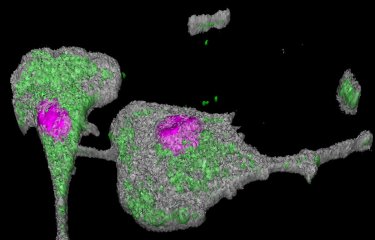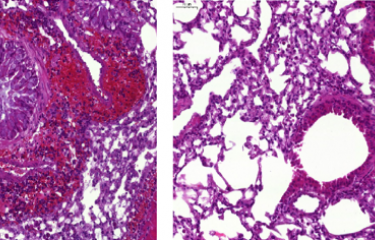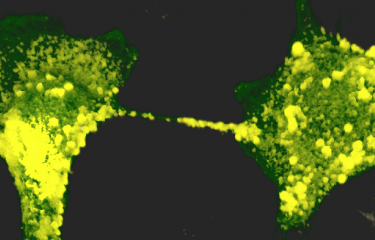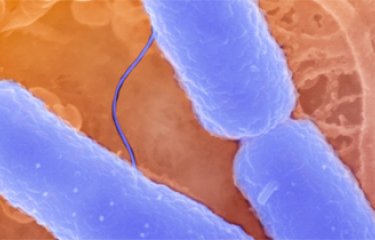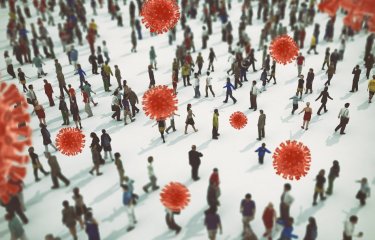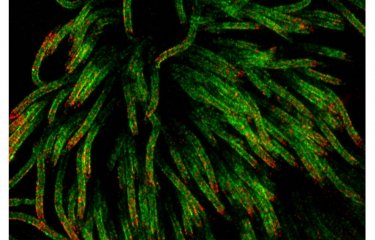Scientists from the Institut Pasteur-TheraVectys Joint Laboratory recently published in Cell Host & Microbe1 the results of tests, in two preclinical models, of a COVID-19 vaccine candidate using a lentiviral vector administered by nasal route. Their study demonstrates that the vaccine candidate induces antibody response with strong neutralizing activity against SARS-CoV-2, as well as substantial cell-mediated responses. Intranasal vaccination with this vector drastically reduces lung viral loads and prevents pathogenic pulmonary inflammation. This research proves the high vaccine efficacy and the fact that its intranasal administration attracts the effectors from the protective immune response into the upper respiratory tract through which the virus enters the body.
"In order to be effective, a coronavirus vaccine must provide protection at the site where the virus enters the body, namely the respiratory tract. Neutralizing antibodies present in the blood only contribute partially to protection. The lentiviral vector is now emerging as a promising vaccine candidate for intranasal administration to induce mucosal immunity with an almost sterilizing effect in two highly sensitive preclinical animal models."
Pierre Charneau, Head of the Institut Pasteur Molecular Virology and Vaccinology Unit, Chief Scientific Officer of TheraVectys, Head of the two entities' Joint Lab.
Characteristics of the vaccine candidate
The vaccination strategy developed in this study is based on a lentiviral vaccine vector, which is a harmless, non-replicative viral vector. An initial injection of a vector induced expression of the SARS-CoV-2 Spike protein which triggered very high antibody titers in mouse serum with an in vitro neutralization capacity comparable to that of symptomatic human patients recovered from COVID-19. Cellular immunity, based on specific T cells, was also induced at a significant level in the vaccinated animals.
After intramuscular vaccination, despite the intense neutralizing activity measured in the blood, partial protection (lung viral loads reduced by a factor of 10) was observed following SARS-CoV-2 challenge. A parallel study2 demonstrated that lung mucosal IgA antibodies were much more efficient in virus neutralization than serum IgG antibodies. Therefore, a prime and target vaccination regimen was applied, in which the immune response was initiated by a standard intramuscular vaccination, and then targeted into the respiratory tract through nasal instillation.
When this prime and target vaccination strategy was used, neutralizing activity measured in the blood did not increase substantially. However, a significant effect on protection was observed after challenge, with lung viral load reduced by a factor of >1,000, falling below the detection limit of an RT-PCR assay in most animals tested. In parallel to drastic viral load reduction, pulmonary inflammation, tissue injury and cytokine storm were also completely inhibited.
"This work introduces the important notion that neutralizing activity of antibodies measured in serum is probably not correlated to the level of protection, and that vaccine protection against SARS-CoV-2 requires mucosal immunity, and notably the presence of IgA antibodies at the site of virus entry, namely the upper respiratory tract," explains Dr. Laleh Majlessi, co-author of the study and head of research at the Institut Pasteur-TheraVectys Joint Lab.
These results generated in mice, in which expression of the human SARS-CoV-2 receptor (human ACE2) was induced artificially, were confirmed in the physiological hamster model that develops a severe pathology mirroring severe human COVID-19. These results are highly predictive of strong vaccine efficacy in humans. Once again, the prime and target vaccination strategy induced almost full protection with a major reduction in lung viral loads which fall below the detection limit, after SARS-CoV-2 challenge, as well as very significant inhibition of pulmonary inflammation, cytokine storm, and histopathological lung lesions.
Since the main target population for the SARS-CoV-2 vaccine is the elderly, convincing protection in preclinical models is essential for subsequent development. The duration of induced protection is a further important criterion. Although by definition, these ongoing tests take time, long-standing protection has already been demonstrated with the lentiviral vaccine platform in several vaccine candidates previously developed against SIV, Zika virus and West Nile viruses, as well as for immune therapy of tumors, in various animal models.
This COVID-19 vaccine candidate was developed in parallel with a sero-neutralization assay, namely “Lenti.S”, by the same team from the Institut Pasteur-TheraVectys joint Lab under Dr. Pierre Charneau's3 scientific supervision.
Source
[1] Intranasal Vaccination with a Lentiviral Vector Protects against SARS-CoV-2 in Preclinical Animal Models, Cell Host & Microbe, December 14, 2020
Min-Wen Ku1£, Maryline Bourgine1,2£, Pierre Authié1£, Jodie Lopez1, Kirill Nemirov1, Fanny Moncoq1, Amandine Noirat1, Benjamin Vesin1, Fabien Nevo1, Catherine Blanc1, Philippe Souque2, Houda Tabbal3, Emeline Simon3,4, David Hardy5, Marine Le Dudal6, Françoise Guinet7, Laurence Fiette6, Hugo Mouquet8, François Anna1, Annette Martin3, Nicolas Escriou9, Laleh Majlessi1,$,#,* and Pierre Charneau1,2,$*
1Institut Pasteur-TheraVectys Joint Lab, Virology Department, 28 rue du Dr. Roux, Paris F-75015, France
2Molecular Virology and Vaccinology Unit, Virology Department, Institut Pasteur
3Molecular Genetics of RNA Viruses Unit, Virology Department, Institut Pasteur, CNRS UMR3569, Université de Paris, Paris-F 75015, France
4Université de Paris, Paris F-75006, France
5Experimental Neuropathology Unit, Global Health Department, Institut Pasteur
6IMMR, 42 boulevard Jourdan, Paris F-75014, France
7Lymphocytes and Immunity Unit, Immunology Department, Institut Pasteur
8Laboratory of Humoral Immunology, Immunology Department, Institut Pasteur, INSERM U1222
9Innovation Lab, Vaccines, Virology Department, Institut Pasteur
£These authors contributed equally
$Senior authors
#Lead Contact
*Corresponding authors
[2] IgA dominates the early neutralizing antibody response to SARS-CoV-2, Science Translational Medicine, December 7, 2020
Sterlin D, Mathian A, Miyara M, Mohr A, Anna F, Claër L, Quentric P, Fadlallah J, Devilliers H, Ghillani P, Gunn C, Hockett R, Mudumba S, Guihot A, Luyt CE, Mayaux J, Beurton A, Fourati S, Bruel T, Schwartz O, Lacorte JM, Yssel H, Parizot C, Dorgham K, Charneau P, Amoura Z, Gorochov G.
[3] A comparison of four serological assays for detecting anti-SARS-CoV-2 antibodies in human serum samples from different populations, Science Translational Medicine, August 17, 2020



